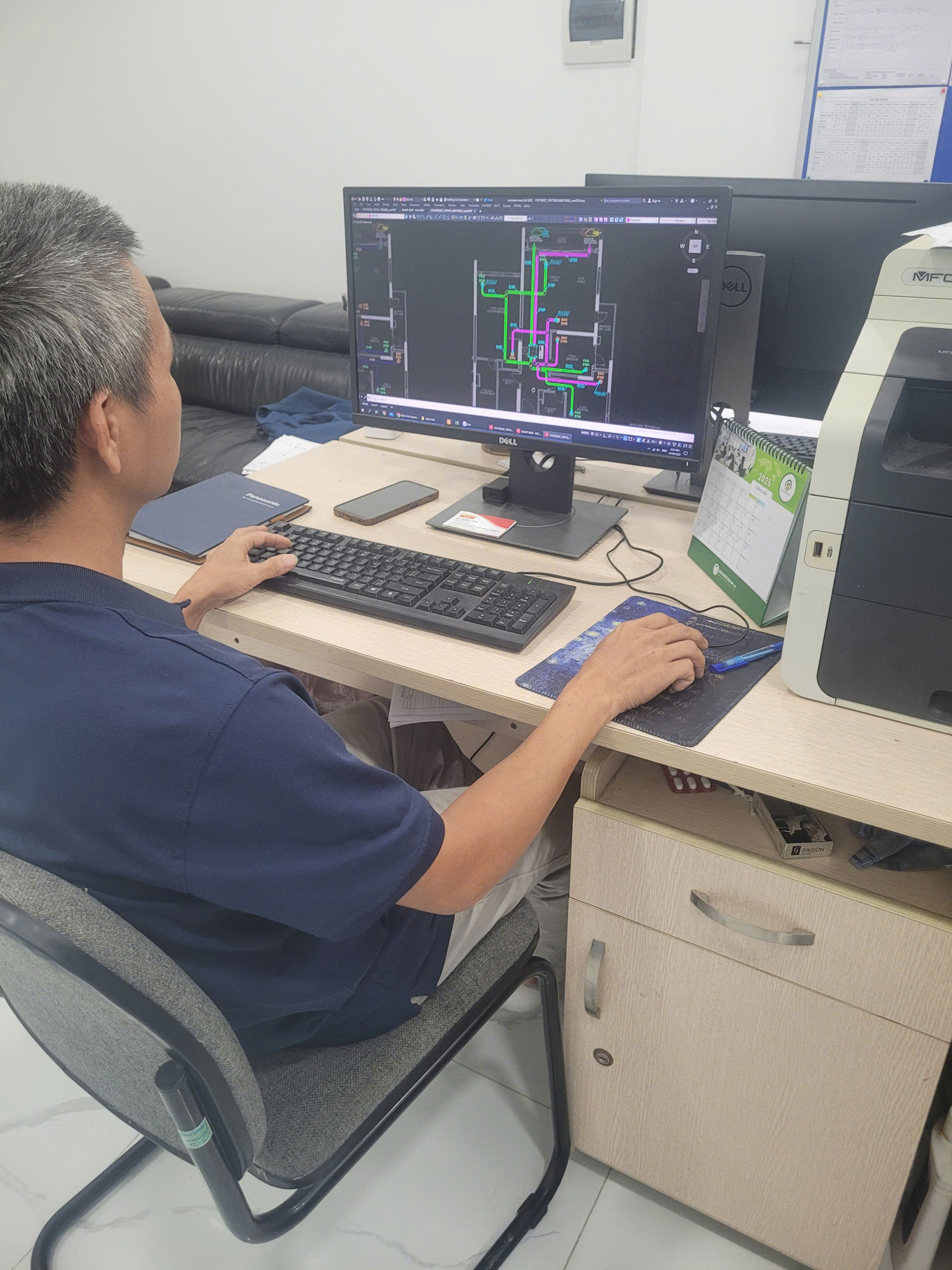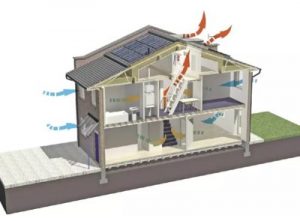Ống gió tươi HDPE 2 lớp cho chung cư đang nổi lên như một lựa chọn tối ưu nhờ hiệu suất cao, độ bền vượt trội và khả năng cách nhiệt tốt. Vậy ống gió tươi HDPE 2 lớp là gì? Ưu điểm của chúng ra sao và ứng dụng thế nào trong các công trình chung cư hiện đại? Hãy cùng SECOTAB tìm hiểu chi tiết ngay sau đây.
Ống gió tươi HDPE 2 lớp là gì?
Ống gió tươi HDPE 2 lớp là loại ống dẫn khí làm từ vật liệu nhựa HDPE (High Density Polyethylene) – một loại polymer có mật độ cao, không độc hại, chịu nhiệt tốt và bền với thời gian.
Cấu tạo ống gió tươi HDPE 2 lớp cho chung cư bao gồm 2 lớp:
- Lớp ngoài: Có gân xoắn, giúp tăng cường độ cứng, chống va đập và uốn cong linh hoạt.
- Lớp trong: Mịn và trơn giúp giảm ma sát, giữ luồng khí di chuyển đều và sạch.
Ống gió tươi HDPE 2 lớp được thiết kế chuyên biệt cho các hệ thống cấp khí tươi trong các công trình dân dụng và công nghiệp, đặc biệt phù hợp với môi trường thi công âm trần, âm sàn hoặc đi xuyên tường trong các tòa nhà cao tầng.
Vì sao nên dùng ống gió tươi HDPE 2 lớp cho chung cư?
Ống gió tươi HDPE 2 lớp cho chung cư được sử dụng phổ biến bởi những ưu điểm như sau:
An toàn và không độc hại
Ống HDPE không chứa các thành phần gây hại như chì, cadmium hay hóa chất độc hại. Khi lắp đặt hệ thống cấp khí tươi – nơi không khí được dẫn trực tiếp vào phòng ở – yếu tố này đặc biệt quan trọng.
Độ bền cao, chống ăn mòn
Khác với ống kim loại dễ bị gỉ sét hoặc biến dạng do thời tiết, ống HDPE 2 lớp có khả năng chống oxy hóa, không bị ăn mòn bởi hơi ẩm, hóa chất hoặc khí độc trong môi trường. Tuổi thọ trung bình của ống có thể lên tới 30–50 năm.
Cách nhiệt tốt, giảm ngưng tụ sương
Nhờ cấu trúc 2 lớp, loại ống này giúp hạn chế tối đa tình trạng ngưng tụ nước khi luồng khí tươi đi qua môi trường có sự chênh lệch nhiệt độ. Điều này giúp bảo vệ trần thạch cao, tường và thiết bị khác khỏi ẩm mốc.
Thi công linh hoạt, tiết kiệm không gian
Ống có trọng lượng nhẹ, dễ uốn, dễ thi công ngay cả ở những vị trí khó như âm sàn, âm trần hay hành lang hẹp của chung cư. Không cần co nối nhiều, giảm rủi ro rò rỉ khí trong quá trình sử dụng.
Tối ưu chi phí bảo trì – vận hành
So với ống kẽm hoặc ống nhựa cứng truyền thống, HDPE giúp giảm thiểu sự cố, tiết kiệm đáng kể chi phí bảo trì và thay thế trong suốt vòng đời dự án.
Ứng dụng của ống gió tươi HDPE 2 lớp trong chung cư
Ống gió tươi HDPE 2 lớp cho được sử dụng trong các hệ thống:
- Cấp khí tươi cho căn hộ: Đảm bảo mỗi căn hộ đều nhận được lượng khí tươi sạch, cải thiện chất lượng sống.
- Thông gió tầng hầm, hành lang kín: Giảm khí độc, CO, CO₂ tích tụ trong không gian ngột ngạt.
- Tích hợp với hệ thống điều hòa trung tâm hoặc máy ERV/HRV: Giúp tái tạo không khí sạch mà vẫn tiết kiệm điện.
- Đặc biệt, tại các tòa chung cư cao cấp, việc lắp đặt hệ thống khí tươi theo tiêu chuẩn ngày càng nghiêm ngặt. Do đó, ống gió tươi HDPE 2 lớp là loại ống được khuyến nghị sử dụng.
Lưu ý khi lắp đặt ống gió tươi HDPE 2 lớp cho chung cư
- Lựa chọn đường kính phù hợp: Tùy vào lưu lượng khí cần cung cấp cho từng căn hộ hoặc khu vực, cần tính toán kỹ đường kính ống (thường từ Ø75 đến Ø200 mm).
- Bảo đảm độ dốc và hướng dòng khí: Tránh gập gãy gây tắc dòng khí hoặc tích tụ nước ngưng.
- Dùng phụ kiện đồng bộ: Nên dùng co nối, van điều chỉnh, hộp phân phối cùng chất liệu HDPE để đảm bảo độ kín và độ bền hệ thống.
- Bọc cách nhiệt nếu cần: Với các đoạn ống đi qua khu vực có sự chênh lệch nhiệt độ lớn, có thể bọc thêm lớp cách nhiệt để tăng hiệu quả sử dụng.
Kết luận
Ống gió tươi HDPE 2 lớp cho chung cư không chỉ đảm bảo an toàn, bền bỉ mà còn mang lại sự tiện lợi trong lắp đặt và tiết kiệm chi phí lâu dài. Đây chắc chắn là lựa chọn xứng đáng cho những ai quan tâm đến sức khỏe và chất lượng không khí trong không gian sống hiện đại. Nếu bạn đang có nhu cầu tìm kiếm đơn vị thiết kế và thi công trọn gói hệ thống thông gió trong nhà, vui lòng liên hệ SECOTAB để được tư vấn chi tiết.














